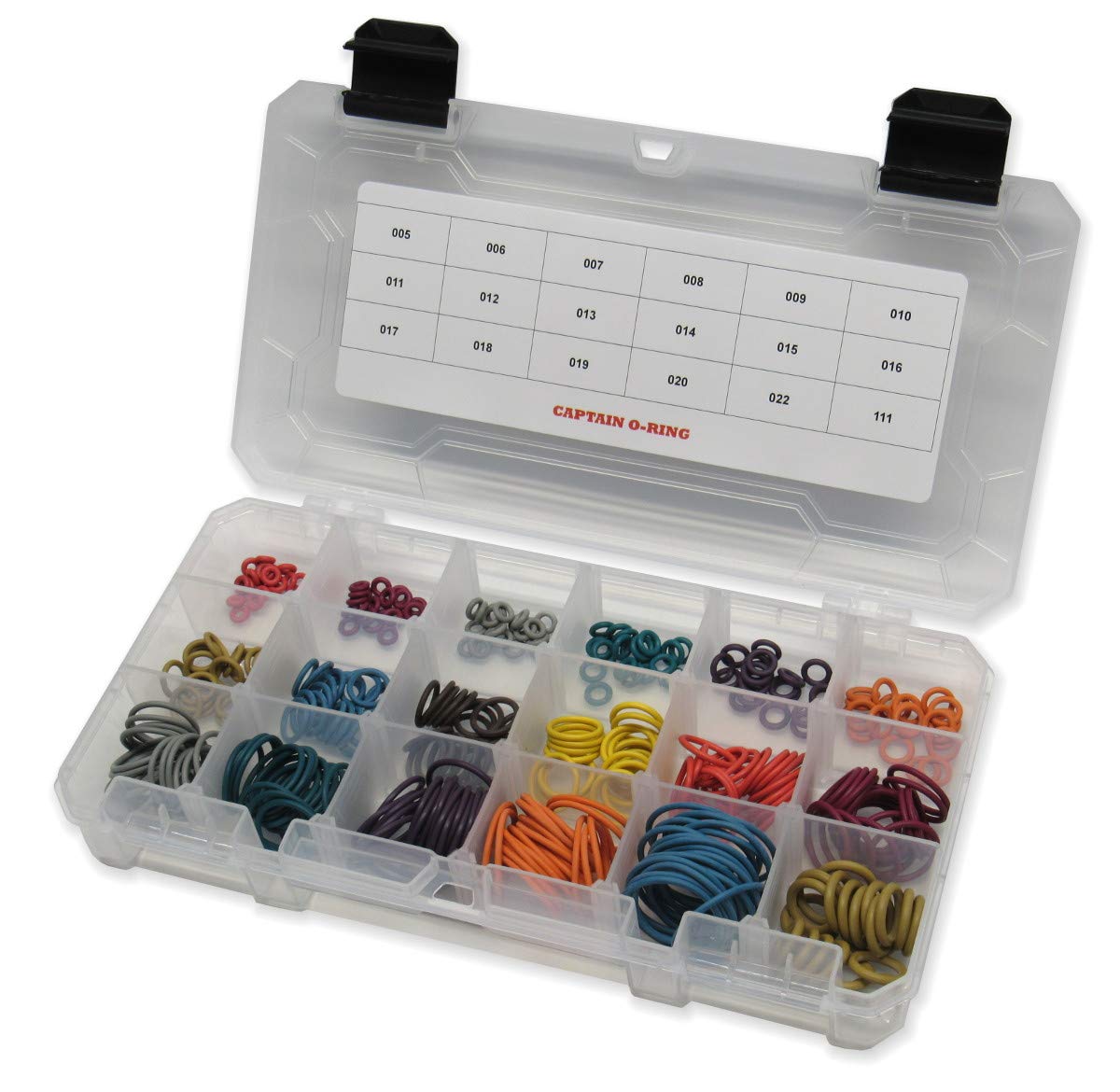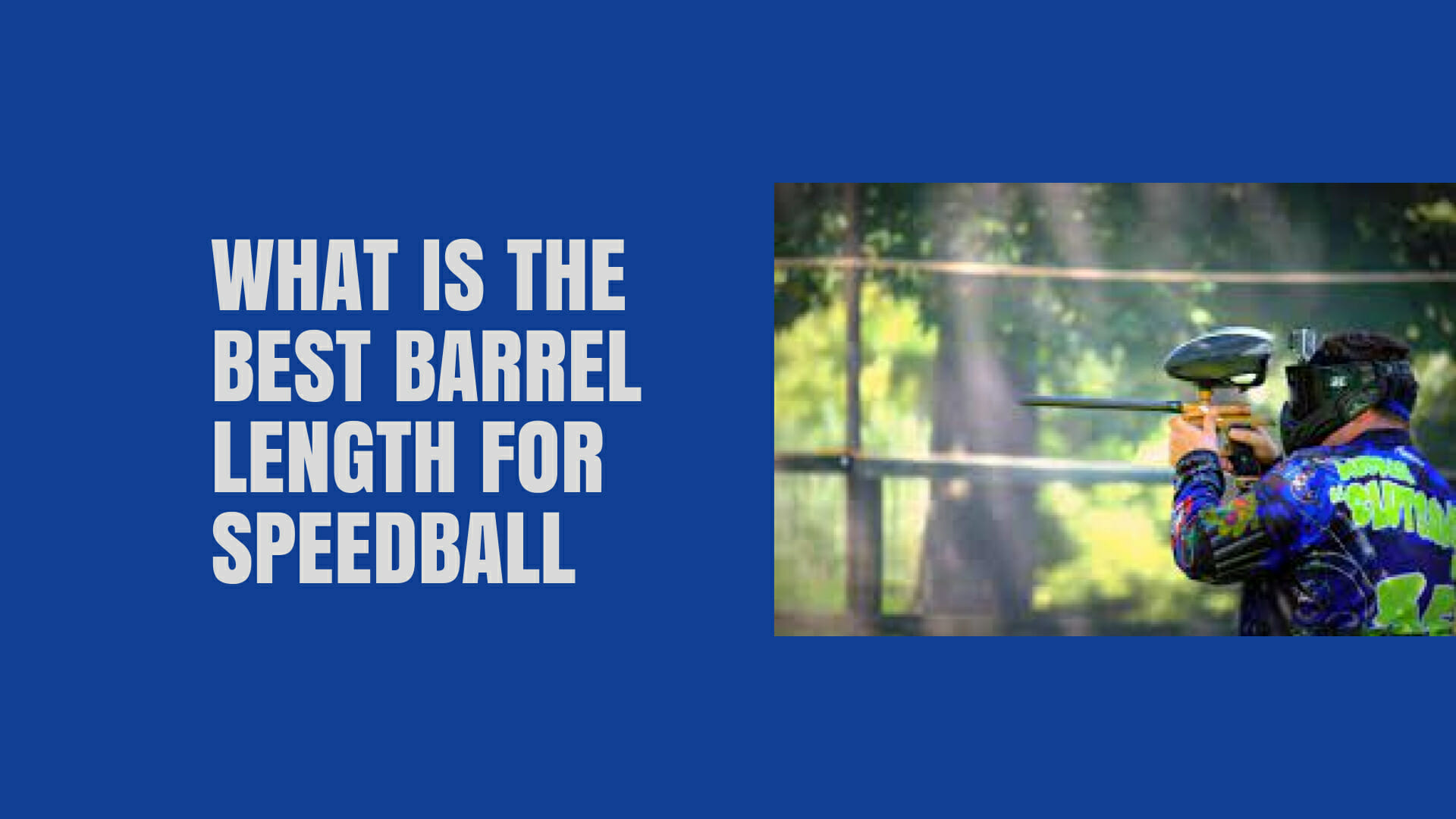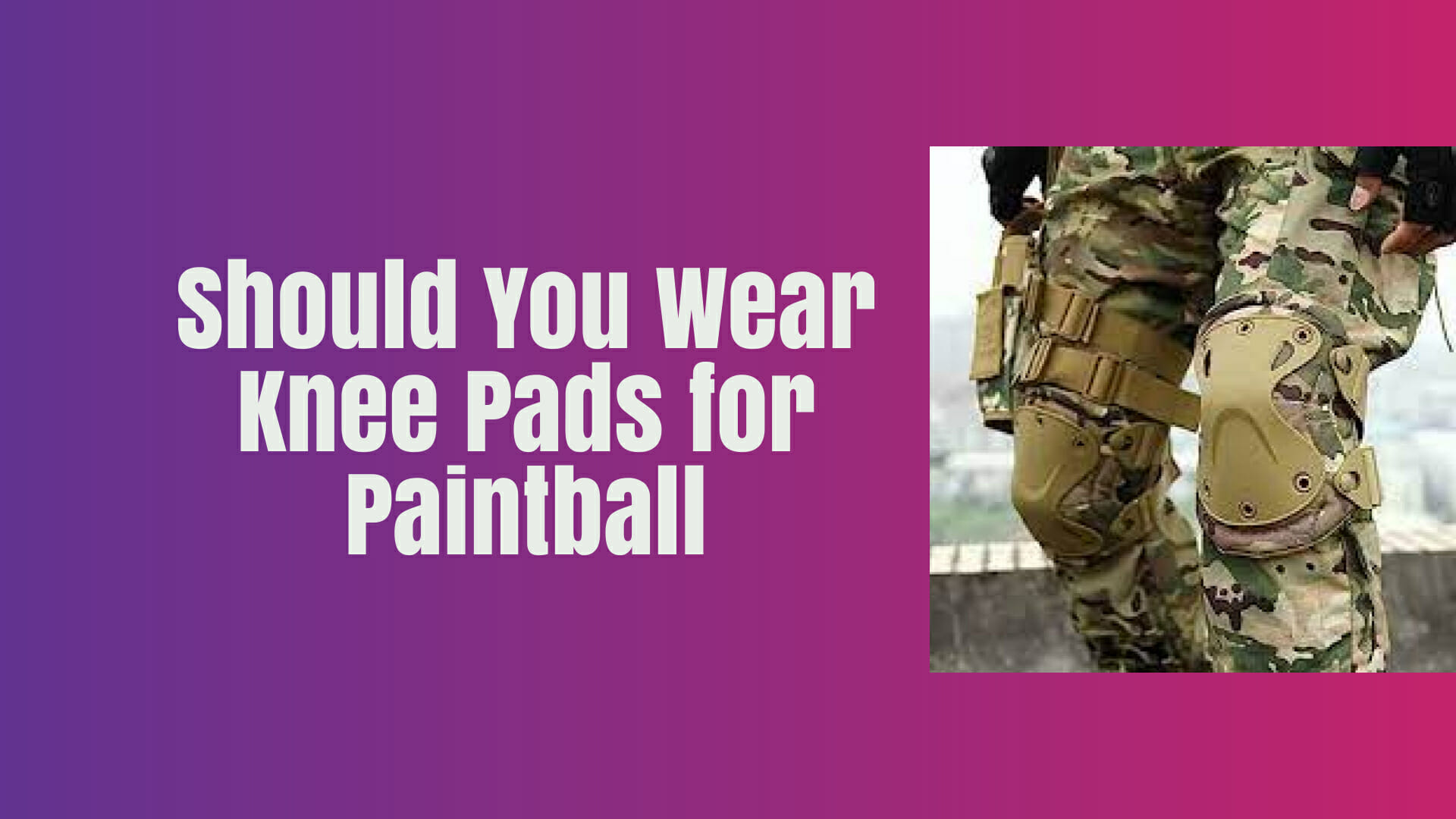The most common paintball size is 68 caliber. Paintballs are getting smaller due to manufacturing, but 68-caliber paintballs are still the most widely used.
In paintball, players use markers (guns) that shoot small round balls filled with colored gelatin. These balls, known as paintballs, come in various sizes. While there are different sizes available, the most common paintball size is 68 caliber. The term “caliber” refers to the diameter of the paintball in inches.
Paintballs are getting smaller in general due to manufacturing processes, but 68 caliber remains the standard and most widely used size in the sport. Understanding the most common paintball size is important for players when selecting equipment, such as barrels and markers, to ensure compatibility and optimal performance on the field.
Overview Of Paintball Sizes
When it comes to paintball, understanding the different sizes of paintballs is crucial. Paintballs come in various sizes, catering to different types of paintball guns and players’ preferences. In this section, we will provide an explanation of paintball sizes, explore the different sizes available in the market, and help you choose the most common and suitable paintball size for your needs.
Explanation of Paintball Sizes
Paintball sizes refer to the diameter or bore size of the paintball. The most common paintball size is .68 caliber, which means the diameter of the paintball is approximately .68 inches. This site has become the standard for recreational and competitive paintball games.
However, it’s important to note that paintball sizes can vary slightly as paintballs are sensitive to temperature and manufacturing processes. While the diameter of a paintball is typically .68 caliber, it’s not uncommon to find paintballs with a variance of a few hundredths of an inch.
Different Sizes Available in the Market
Aside from the most common .68 caliber paintballs, there are also other sizes available in the market to meet specific needs and preferences. Here are some of the different paintball sizes you may come across:
- .50 Caliber: These paintballs are smaller in size compared to the standard .68 caliber ones. They are commonly used in low-impact paintball games, where players prefer less impact and more tactical gameplay. .50 caliber paintball guns are also popular among younger players and beginners.
- .43 Caliber: These paintballs are even smaller than .50 caliber paintballs. They are primarily used for training purposes and in paintball markers designed for military simulations. The reduced size allows for greater realism in these scenarios.
- Other Sizes: In addition to .68, .50, and .43 caliber sizes, you may come across paintballs with slightly different diameters. These can include .67 caliber, .69 caliber, and other variations. However, these sizes are less common and may be specific to certain brands or types of paintball guns.
Before purchasing paintballs, it’s essential to check the recommended caliber size for your paintball gun. Using the wrong-sized paintballs can lead to inefficiencies, such as poor accuracy and jamming.
In conclusion, understanding paintball sizes is crucial for selecting the right paintballs and ensuring optimal performance in your paintball games. The most common paintball size is .68 caliber, but there are also smaller sizes like .50 and .43 caliber available in the market. Remember to check your paintball gun’s specifications and choose the appropriate size to enhance your gameplay experience.

Standard Paintball Size
In the world of paintball, there are various sizes of paintballs available. However, the most common size that you will come across is the standard paintball size. Understanding the standard paintball size is essential for players as it impacts their gameplay, accuracy, and overall experience on the field. In this blog post, we will explore the standard paintball size, compare it with other sizes, and provide you with all the information you need to know. So, let’s dive in!
What is the standard paintball size?
The standard paintball size is typically measured in terms of its diameter. The most commonly used standard paintball size has a diameter of around 17.3mm. This size is considered the industry standard and is widely used in most paintball games and tournaments. The standard size offers an excellent balance between accuracy, range, and impact without causing significant pain or injury to players when properly regulated.
Comparison of standard size with other sizes
While the standard paintball size is the most commonly used, there are other sizes available in the market as well. Let’s compare the standard size with some of these alternative sizes:
| Paintball Size | Diameter | Pros | Cons |
|---|---|---|---|
| Standard Size | 17.3mm | Widely available, balanced performance | May lack the desired impact for some players |
| Large Size | 18-19mm | Increased impact, ideal for scenario games | May cause more pain and discomfort upon impact |
| Small Size | 14-15mm | Lightweight, increased speed and accuracy | May lack impact and be affected by wind |
It’s important to note that the choice of paintball size depends on various factors such as personal preference, game type, and field regulations. While the standard size remains the most popular and widely accepted, players should always consult the rules and guidelines of the specific field or tournament they are participating in.
Now that you have a better understanding of the standard paintball size and its comparison with other sizes, you can make an informed decision when it comes to selecting the right paintball for your gameplay. Remember, practicing with different sizes and testing their performance is the best way to discover which size works best for you. Happy paintballing!
Why Are Paintballs Getting Smaller?
Paintballs have been experiencing a consistent decrease in size, and this is not solely due to temperature-related shrinkage or swelling. The main reason behind the smaller paintball sizes is the manufacturing process. Manufacturers are intentionally producing smaller paintballs for various reasons, which we will discuss in this article.
Factors leading to smaller paintball sizes
There are several factors that contribute to the trend of smaller paintball sizes:
- Improved accuracy: Smaller paintballs tend to be more accurate when shot from a paintball gun, as they stream through the air with less resistance. This allows players to achieve better precision when aiming at targets.
- Reduced impact force: Smaller paintballs result in reduced impact force upon hitting the target. This is important for player safety, as it minimizes the risk of injuries. It also provides a more enjoyable experience for beginners and recreational players who may be less tolerant of pain.
- Increased speed and range: Smaller paintballs can be shot at higher velocities without sacrificing accuracy. This allows for increased speed and range during gameplay, making it more exciting and challenging.
- Efficiency and cost-effectiveness: Smaller paintballs consume less air when shot, resulting in increased efficiency and cost-effectiveness. Players can play longer without having to refill their air tanks frequently. Additionally, smaller paintballs require less material to manufacture, reducing production costs.
Impact on gameplay and equipment
The shift towards smaller paintball sizes has also impacted gameplay strategies and equipment choices:
- Faster gameplay: Smaller paintballs enable faster gameplay due to increased speed and reduced impact force. This leads to more dynamic and thrilling matches, where quick reflexes and agility are essential.
- Upgraded gear: Players must adapt their equipment to accommodate the smaller paintball sizes. This includes using paintball guns with smaller bore sizes, which provide a better fit for the smaller projectiles. Barrel inserts and control bores have also become popular accessories to help optimize performance with smaller paintballs.
- Tactical advantages: Smaller paintballs allow players to take advantage of smaller hiding spots and take more accurate shots from a distance, enhancing their tactical gameplay.
Overall, the trend of paintballs getting smaller is influenced by the desire for improved accuracy, reduced impact force, increased speed and range, as well as efficiency and cost-effectiveness. This shift has not only affected gameplay dynamics but also necessitated equipment upgrades to optimize performance. It will be interesting to see how the paintball industry continues to innovate and evolve in response to these changing trends.
Paintball Barrel Bore Size
Overview of Barrel Bore Size
One important aspect to consider in the world of paintball is the barrel bore size. The barrel bore size refers to the diameter of the inside of the paintball barrel. It plays a significant role in determining the accuracy and performance of your paintball gun. Understanding the impact of barrel bore size is crucial for players looking to improve their accuracy and overall gameplay.
How It Affects Paintball Accuracy
The barrel bore size directly affects paintball accuracy. A barrel with a larger bore size allows more air to escape around the paintball as it is fired, resulting in reduced accuracy and consistency. On the other hand, a barrel with a smaller bore size holds the paintball more tightly, ensuring a more precise shot. The ideal bore size will depend on various factors like the type of paintballs you use, the air pressure, and the weather conditions.
It’s essential to find the right balance between the paintball size and barrel bore size to achieve optimal accuracy. Using a barrel with a bore size that matches the paintball diameter closely will result in better shot consistency and improved precision on the field.
Here’s a quick glance at some commonly used bore sizes:
| Bore Size (in inches) | Recommended Paintball Type |
|---|---|
| 0.679 | Tournament-grade paintballs |
| 0.682 | All-purpose paintballs |
| 0.685 | Mid-grade paintballs |
| 0.688 | Field-grade paintballs |
Remember, these are general guidelines, and some variations may occur depending on the manufacturer and individual preferences. It’s always recommended to test different bore sizes with your specific paintball gun and paintball type to find the perfect combination for maximum accuracy.
Conclusion
Choosing the right barrel bore size is a crucial decision for any paintball player wanting to enhance their accuracy on the field. Understanding how barrel bore size affects paintball accuracy allows you to make informed choices when selecting your gear. Experimenting with different bore sizes and paintball types will ultimately help you find the optimal combination for consistent and precise shots.
Most Common Bore Sizes For Paintball Barrels
When it comes to paintball barrels, one important factor to consider is the bore size. The bore size refers to the internal diameter of the barrel and can have a significant impact on the performance of your paintball gun. In this section, we will discuss the most common bore sizes for paintball barrels, their pros and cons, and help you choose the right one for your needs.
Discussion of popular bore sizes
There are several popular bore sizes that you will come across when shopping for a paintball barrel. These sizes include:
- .689 bore
- .685 bore
- .691 bore
These bore sizes are widely used and offer different advantages depending on your style of play and the type of paintballs you use.
Pros and cons of each size
| Bore Size | Pros | Cons |
|---|---|---|
| .689 bore | 1. Offers a good balance between accuracy and efficiency. | 1. May experience more barrel breaks with larger paintballs. |
| .685 bore | 1. Provides a tight fit for smaller paintballs, reducing air loss and increasing efficiency. | 1. May have decreased accuracy with larger paintballs. |
| .691 bore | 1. Ideal for shooting larger paintballs, reducing barrel breaks. | 1. May experience reduced efficiency with smaller paintballs. |
Based on your playing style and the type of paintballs you use, you can choose the bore size that best suits your needs. If you are unsure, it is recommended to try different bore sizes and see which one performs the best with your setup.
Remember, it is important to clean your paintball barrel regularly to maintain optimal performance, regardless of the bore size.
Choosing The Right Bore Size
When it comes to paintball, choosing the right bore size for your barrel is crucial. The bore size refers to the diameter of the inner barrel and plays a significant role in determining the accuracy, efficiency, and consistency of your shots. Factors such as paintball size, playing style, and weather conditions should be taken into consideration when selecting a bore size. In this article, we will discuss the key factors to consider and provide recommendations for different playing styles, helping you make an informed decision.
Factors to consider when selecting a bore size
When selecting a bore size, there are several factors that you should consider:
- Paintball Size: The most common paintball size is 0.68 caliber, which means its diameter is approximately 17.3mm. However, paintballs can vary in size, so it is essential to know the specific size of the paintballs you will be using. Different bore sizes work optimally with different paintball sizes, so it is crucial to match the bore size to the paintball size for optimal performance.
- Weather Conditions: Weather conditions can affect the size and brittleness of paintballs. In colder weather, paintballs tend to shrink, while in warmer weather, they can expand. This variation in size can impact the efficiency and accuracy of your shots. It is recommended to select a bore size that accommodates the average size of paintballs you will be using in the typical weather conditions you play in.
- Playing Style: Your playing style can also influence the ideal bore size for your barrel. Aggressive players who engage in close-quarter combat may prefer a tighter bore size, as it provides a more consistent and accurate shot. On the other hand, players who engage in long-range sniping may opt for a slightly larger bore size for increased accuracy and reduced barrel breaks.
- Barrel Length: It’s worth mentioning that the length of the barrel can also affect the performance of the bore size. Longer barrels tend to provide better accuracy, while shorter barrels offer better maneuverability. It’s crucial to strike a balance between the two when selecting both the bore size and barrel length for your playing style.
Recommendations for different playing styles
Based on different playing styles, here are some general recommendations for bore sizes:
| Playing Style | Recommended Bore Size |
|---|---|
| Aggressive/CQB | 0.679 – 0.681 |
| Mid-Range/Mixed | 0.683 – 0.685 |
| Long-Range/Sniper | 0.687 – 0.689 |
It’s important to note that these recommendations are not set in stone, and personal preferences may vary. It is always a good idea to experiment with different bore sizes to find the one that suits your playing style and equipment best.
Choosing the right bore size plays a significant role in optimizing your paintball shooting experience. By considering factors such as paintball size, weather conditions, playing style, and barrel length, you can make an informed decision and enhance your accuracy and efficiency on the field.
Paintball Equipment And Bore Sizes
When it comes to paintball, understanding the equipment and the sizes that go along with it is crucial for an enjoyable and successful game. One important aspect to consider is the bore size of the paintball markers, also known as the barrel size. The bore size refers to the internal diameter of the barrel, and it plays a significant role in the accuracy, efficiency, and performance of the marker. In this section, we will dive into the analysis of paintball equipment and their compatibility with bore sizes, as well as provide a review of popular paintball markers and their recommended bore sizes.
Analysis of paintball equipment and their compatibility with bore sizes
To understand the compatibility of paintball equipment with different bore sizes, it is essential to consider the variations in paintball sizes available. The most commonly used paintball size is 0.68 caliber, with a diameter of approximately 17.3mm. However, it is important to note that paintballs can slightly vary in size due to factors such as temperature and manufacturing processes.
When it comes to paintball markers, the bore size of the barrel should match the size of the paintballs being used. This ensures a proper fit and optimal performance. Using a barrel with a larger bore size than the paintballs can result in decreased accuracy and efficiency, as the paintballs may bounce around inside the barrel. On the other hand, using a barrel with a smaller bore size can cause the paintballs to break or become jammed, leading to inconsistent shots.
Manufacturers of paintball markers often provide recommendations for the bore sizes that work best with their specific models. It is important to follow these recommendations to achieve the desired performance. Additionally, there are various barrel kits available in the market that come with multiple bore-size options. These kits allow players to experiment and find the optimal bore size for their specific paintballs and playing style.
Review of popular paintball markers and their recommended bore sizes
When it comes to popular paintball markers, different brands and models have their own recommended bore sizes. It is crucial to consider these recommendations to maximize the performance of your marker. Here is a review of some popular paintball markers and their recommended bore sizes:
| Paintball Marker | Recommended Bore Size |
|---|---|
| Marker 1 | 0.689 |
| Marker 2 | 0.685 |
| Marker 3 | 0.691 |
| Marker 4 | 0.686 |
These are just a few examples, and it is important to refer to the manufacturer’s recommendations for specific models. By using the recommended bore size, players can ensure better accuracy, consistency, and overall performance of their paintball markers.
In conclusion, understanding the relationship between paintball equipment and bore sizes is crucial for a successful game. By properly matching the bore size of the barrel with the paintball size and following the recommended guidelines from manufacturers, players can experience improved accuracy and efficiency in their shots. So, make sure to consider the bore size when selecting a paintball marker and enjoy a fantastic paintball experience!
Controlling Paintball Size
Overview of paintball barrel testing
Testing paintball barrels is an essential part of ensuring optimal performance and accuracy on the field. With various factors affecting barrel performance, such as paintball size and bore size, it is crucial to understand and evaluate how different barrels perform under different circumstances. Through comprehensive testing, players can identify the best barrel for their specific needs.
Different tests used to evaluate barrel performance
There are several tests used to evaluate the performance of paintball barrels. Let’s take a look at some of the most common ones:
- Accuracy Test: This test assesses the barrel’s ability to shoot paintballs accurately at a target from a specific distance. It helps determine the consistency and precision of the barrel’s trajectory.
- Efficiency Test: The efficiency test measures how effectively the barrel uses air to propel paintballs. It evaluates the barrel’s ability to maximize air usage and minimize wastage, ultimately impacting the number of shots per tank.
- Noise Test: Paintball markers can produce varying levels of sound during firing. The noise test assesses the barrel’s ability to reduce or amplify the sound produced by the paintball marker. Lower noise levels can provide a tactical advantage by reducing the player’s audibility on the field.
- Paintball Size Test: Paintballs come in different sizes, and it is essential to test how different barrels perform with specific paintball sizes. This test helps identify the optimal barrel for a particular paintball size, ensuring better ball-to-barrel fit and improved accuracy.
- Bore Size Test: The bore size of a paintball barrel plays a crucial role in ensuring consistent and efficient performance. Bore size tests evaluate how different barrels perform with various bore sizes, helping players find the perfect match for their paintballs.
These tests provide valuable insights into barrel performance, allowing players to make informed decisions about their equipment. It is important to note that individual preferences and playing styles may also contribute to the selection process. Therefore, experimenting with different barrels and conducting personal tests can help players find their ideal barrel setup.
Frequently Asked Questions
What Size Barrel Is Best For Paintball?
The most common paintball barrel size is 0. 689 inches.
How Big Is .68 Caliber?
The. 68 caliber is the most common size for paintballs. The diameter of a paintball is approximately 17. 3mm, with some variations due to manufacturing processes. Paintballs may shrink or swell due to temperature, but the consistent size is a result of manufacturing.
Why Are Paintballs Getting Smaller?
Paintballs are getting smaller due to manufacturing processes, not temperature changes.
How Many Mm Is A .68 Caliber Paintball?
A. 68 caliber paintball is approximately 17. 3mm in diameter. The size of paintballs can vary, but. 68 caliber is the most common size used in paintball games.
Conclusion
The most common paintball size is 0. 68 caliber. While there are other sizes available, 0. 68 caliber remains the standard in the paintball industry. This size is widely used in both recreational and competitive paintball games. The consistency in size is due to manufacturing processes, ensuring uniformity across different brands and models of paintball guns.
So, when it comes to choosing paintballs, 0. 68 caliber is your best bet for compatibility and availability.



